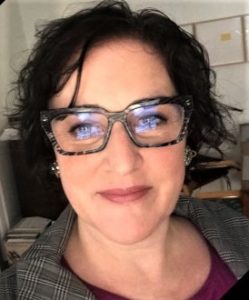 Natasha Goldman, PhD, the project co-director, has been writing, teaching, and researching the Holocaust and memorials for the past two decades. Her publications investigate the social context of memorials, as well as the process of commissioning and building them. Her manuscript, Memory Passages: Holocaust Memorials in Germany and the US was published with Temple University Press in 2020. She was a Silberman Fellow at the United States Holocaust Memorial Museum. The DAAD (German Academic Exchange Service), Fulbright-Hays, and the German government have funded her research in Germany.
Natasha Goldman, PhD, the project co-director, has been writing, teaching, and researching the Holocaust and memorials for the past two decades. Her publications investigate the social context of memorials, as well as the process of commissioning and building them. Her manuscript, Memory Passages: Holocaust Memorials in Germany and the US was published with Temple University Press in 2020. She was a Silberman Fellow at the United States Holocaust Memorial Museum. The DAAD (German Academic Exchange Service), Fulbright-Hays, and the German government have funded her research in Germany.
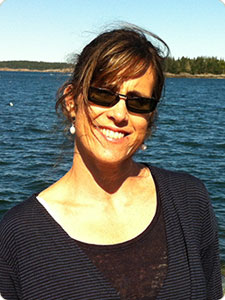 Page Herrlinger, Associate Professor of History and project co-director, specializes in twentieth-century Germany and Russia. She has been teaching Holocaust-related courses at Bowdoin since 1998, including “History of the Holocaust: Context, Experience and Memory”; “The German Experience 1918–1945”; and “Experiments in Totalitarianism,” a comparison of Stalinist Russia and Nazi Germany. A 2009-10 NEH faculty research fellowship and more recently, a Franklin Research Grant from the American Philosophical Society funded her research, which deals in part with issues of belief and toleration under totalitarianism. In 2010, she participated in the Jack and Anita Hess Seminar for Faculty at the United States Holocaust Memorial Museum, “The Holocaust in the Soviet Union: New Sources, New Perspective for Use in Teaching,” and in 2008, an NEH Summer Seminar, “Sources of Russian and Soviet Visual Cultures, 1860–1935” at the New York Public Library. For more than a decade, Herrlinger has presented and experimented extensively with the teaching of history through visual texts, and for the purposes of this seminar, will be responsible for the historical material.
Page Herrlinger, Associate Professor of History and project co-director, specializes in twentieth-century Germany and Russia. She has been teaching Holocaust-related courses at Bowdoin since 1998, including “History of the Holocaust: Context, Experience and Memory”; “The German Experience 1918–1945”; and “Experiments in Totalitarianism,” a comparison of Stalinist Russia and Nazi Germany. A 2009-10 NEH faculty research fellowship and more recently, a Franklin Research Grant from the American Philosophical Society funded her research, which deals in part with issues of belief and toleration under totalitarianism. In 2010, she participated in the Jack and Anita Hess Seminar for Faculty at the United States Holocaust Memorial Museum, “The Holocaust in the Soviet Union: New Sources, New Perspective for Use in Teaching,” and in 2008, an NEH Summer Seminar, “Sources of Russian and Soviet Visual Cultures, 1860–1935” at the New York Public Library. For more than a decade, Herrlinger has presented and experimented extensively with the teaching of history through visual texts, and for the purposes of this seminar, will be responsible for the historical material.
Samantha Francis-Taylor, MA, Language Arts teacher, Brunswick High School & K-12 specialist for this project. Over her ten-year career, Samantha has taught 9th-12th grade at all levels (AP, Honors, Academic, and Preparatory) and is currently teaching AP Language & Composition, Honors English II, Introduction to College Writing, and Writing Studio to sophomores and seniors. She has traveled to Germany several times, visited numerous Holocaust sites, and has been teaching the Holocaust to 10th grade students since 2011. During the seminar she will be responsible for providing feedback to participants on their assignments and brainstorming ways to integrate material into teachers’ current curricula.
 Project Coordinator Rebecca Banks is the Dept. of History Coordinator at Bowdoin College. Her role in this project is to coordinate the application process, to help participants with logistics, and to ensure that the practical aspects of the seminar run smoothly.
Project Coordinator Rebecca Banks is the Dept. of History Coordinator at Bowdoin College. Her role in this project is to coordinate the application process, to help participants with logistics, and to ensure that the practical aspects of the seminar run smoothly.
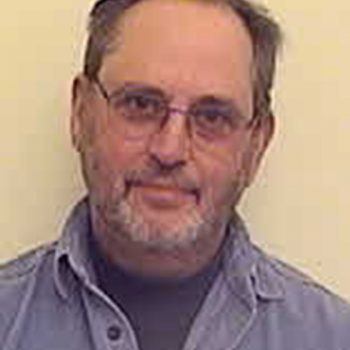 Artist Robert Katz, MFA, the University of Maine at Augusta, has been working with the theme of the Holocaust for several decades, specializing in interactive art and sculpture. He recently lectured on his installation about Maine Holocaust survivors, Were the House Still Standing, in Nanjing University in China and for the Faculty of Divinity at Cambridge University, England.
Artist Robert Katz, MFA, the University of Maine at Augusta, has been working with the theme of the Holocaust for several decades, specializing in interactive art and sculpture. He recently lectured on his installation about Maine Holocaust survivors, Were the House Still Standing, in Nanjing University in China and for the Faculty of Divinity at Cambridge University, England.
 Visiting Scholar Jonathan Petropoulos is a Professor of History at Claremont McKenna College. His areas of expertise are European History, Germany, Holocaust Art Theft/Looted Art, Radical Right Wing, and World War II. He has published many books on the topic of art and the Nazi period, including: Artists Under Hitler: Collaboration and Survival in Nazi Germany (2014); Royals and the Reich: The Princes von Hessen in Nazi Germany (2006); The Faustian Bargain: The Art World in Nazi Germany (2000); and Art as Politics in the Third Reich (1996). Among other distinguished awards, he was appointed Research Director for the Presidential Advisory Commission on Holocaust Assets in the United States 1999– 2000, a Fellow at the Royal Historical Society (U.K.), 2009–present and was awarded an Alexander von Humboldt Foundation fellowship for 2000–2001
Visiting Scholar Jonathan Petropoulos is a Professor of History at Claremont McKenna College. His areas of expertise are European History, Germany, Holocaust Art Theft/Looted Art, Radical Right Wing, and World War II. He has published many books on the topic of art and the Nazi period, including: Artists Under Hitler: Collaboration and Survival in Nazi Germany (2014); Royals and the Reich: The Princes von Hessen in Nazi Germany (2006); The Faustian Bargain: The Art World in Nazi Germany (2000); and Art as Politics in the Third Reich (1996). Among other distinguished awards, he was appointed Research Director for the Presidential Advisory Commission on Holocaust Assets in the United States 1999– 2000, a Fellow at the Royal Historical Society (U.K.), 2009–present and was awarded an Alexander von Humboldt Foundation fellowship for 2000–2001
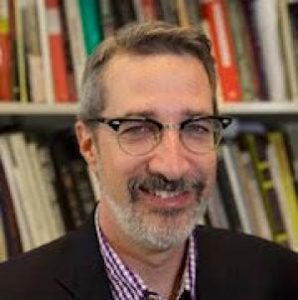 Visiting Scholar Paul Jaskot is Professor of Art, Art History & Visual Studies at Duke University. He received his PhD in Art History from Northwestern University. He teaches courses on architectural history, modern architecture and urban planning, and German art with a particular emphasis on National Socialist Germany. In addition to his teaching, Jaskot is also the Director of the Wired! Lab for Digital Art History and Visual Culture at Duke. His scholarly work focuses on the political history of Nazi art and architecture as well as its postwar cultural impact. He is the author of The Architecture of Oppression: The SS, Forced Labor, and the Nazi Monumental Building Economy (2000) as well as The Nazi Perpetrator: Postwar German Art and the Politics of the Right (2012). He has co-edited Beyond Berlin: Twelve German Cities Confront the Nazi Past (2008) as well as New Approaches to an Integrated History of the Holocaust: Social History, Representation, Theory (forthcoming 2018). In addition, for the past decade, he has been a member of the Holocaust Geography Collaborative exploring the use of GIS and other digital methods to analyze the spatial history of the Holocaust. He contributed three co-authored essays to their volume, Geographies of the Holocaust (2014), the first book to address the analysis of Holocaust spaces with GIS. Currently, he is continuing his collaborative work in an analysis of the spaces of the Nazi ghettos of Occupied Europe as well as a solo-researched project on the history of the construction industry in Germany, 1914-1945. From 2014-2016, Jaskot was the Andrew W. Mellon Professor at the Center for Advanced Study in the Visual Arts (National Gallery of Art, Washington, DC). He was also the President of the College Art Association (2008-2010).
Visiting Scholar Paul Jaskot is Professor of Art, Art History & Visual Studies at Duke University. He received his PhD in Art History from Northwestern University. He teaches courses on architectural history, modern architecture and urban planning, and German art with a particular emphasis on National Socialist Germany. In addition to his teaching, Jaskot is also the Director of the Wired! Lab for Digital Art History and Visual Culture at Duke. His scholarly work focuses on the political history of Nazi art and architecture as well as its postwar cultural impact. He is the author of The Architecture of Oppression: The SS, Forced Labor, and the Nazi Monumental Building Economy (2000) as well as The Nazi Perpetrator: Postwar German Art and the Politics of the Right (2012). He has co-edited Beyond Berlin: Twelve German Cities Confront the Nazi Past (2008) as well as New Approaches to an Integrated History of the Holocaust: Social History, Representation, Theory (forthcoming 2018). In addition, for the past decade, he has been a member of the Holocaust Geography Collaborative exploring the use of GIS and other digital methods to analyze the spatial history of the Holocaust. He contributed three co-authored essays to their volume, Geographies of the Holocaust (2014), the first book to address the analysis of Holocaust spaces with GIS. Currently, he is continuing his collaborative work in an analysis of the spaces of the Nazi ghettos of Occupied Europe as well as a solo-researched project on the history of the construction industry in Germany, 1914-1945. From 2014-2016, Jaskot was the Andrew W. Mellon Professor at the Center for Advanced Study in the Visual Arts (National Gallery of Art, Washington, DC). He was also the President of the College Art Association (2008-2010).
2019 Guest Scholar:
Samantha Baskind, PhD
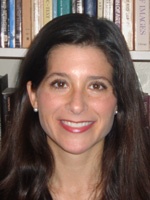 Samantha Baskind joined the faculty at CSU in August 2004, having previously taught taught at the University of Miami (where she held a joint appointment in art history and Judaic studies), James Madison University, and the University of Pittsburgh. Her courses include Twentieth-Century Art, American Visual Culture, and Nineteenth-Century Art, and her most recent seminars are American Art and the Great Depression, Art and the Holocaust, and Jewish American Art and Culture.
Samantha Baskind joined the faculty at CSU in August 2004, having previously taught taught at the University of Miami (where she held a joint appointment in art history and Judaic studies), James Madison University, and the University of Pittsburgh. Her courses include Twentieth-Century Art, American Visual Culture, and Nineteenth-Century Art, and her most recent seminars are American Art and the Great Depression, Art and the Holocaust, and Jewish American Art and Culture.
Her research mostly focuses on nineteenth- and twentieth-century Jewish American art and culture. Presentations on these subjects have been made at the annual conferences of the College Art Association, Association for Jewish Studies, American Culture Association, Southeastern College Art Association, World Congress of Jewish Studies (in Israel), American Academy of Religion, and Group for Early Modern Cultural Studies. She has also lectured widely at universities, museums, and congregations throughout the United States and abroad, including Stanford University, Columbia University, Cornell University, Oxford University (England), University of Graz (Austria), SWPS Uniwersytet Humanistycznospoleczny (Poland), Simon Dubnow Institute (Germany) and Bar Ilan University (Israel), among many others.
Her book, Raphael Soyer and the Search for Modern Jewish Art (2004), was funded by grants from the Terra Foundation for the Arts and American Council of Learned Societies, the Jewish Historical Society of New York, and the Lucius N. Littauer Foundation, in addition to receiving a Koret Jewish Studies Publications Program award. She is sole author of Encyclopedia of Jewish American Artists (2007), a 2006-7 College and Research Libraries selected reference work. A co-edited volume with Ranen Omer-Sherman, The Jewish Graphic Novel: Critical Approaches (2008), is considered the foundational volume in the field. Jewish Art: A Modern History, coauthored with Larry Silver was published in 2011. Jewish Artists and the Bible in Twentieth-Century America (2014) considers the proliferation of biblical themes by Jewish painters, printmakers, sculptors, and book illustrators. This book has been funded by the National Endowment for the Humanities, Memorial Foundation for Jewish Culture, and the Hadassah-Brandeis Institute. Her most recently published book, The Warsaw Ghetto in American Art and Culture (2018), examines the ghetto’s diverse meanings in American culture by paying close attention to how its story has been told, retold, and remembered in fine art, book illustrations, film, television, radio, theater, fiction, poetry, and comics. Recent articles have appeared in American Art, History of Photography, Winterthur Portfolio, and Jewish Social Studies, among other venues. Baskind served as editor for U.S. art for the 26-volume revised edition of the Encyclopaedia Judaica (2006) and is also the editor of Pennsylvania State University Press’s book series: “Dimyonot: Jews and the Cultural Imagination.” Her current book project , about the once prominent but now largely forgotten 19th-century sculptor Moses Jacob Ezekiel, seeks to reconstruct his body of work, explore the influence of his Jewish identity on his art, and more broadly, to investigate the country’s effort to memorialize the Confederacy, through art, in the years after the Civil War. This project has been funded by the Southern Jewish Historical Society and the National Endowment for the Humanities.